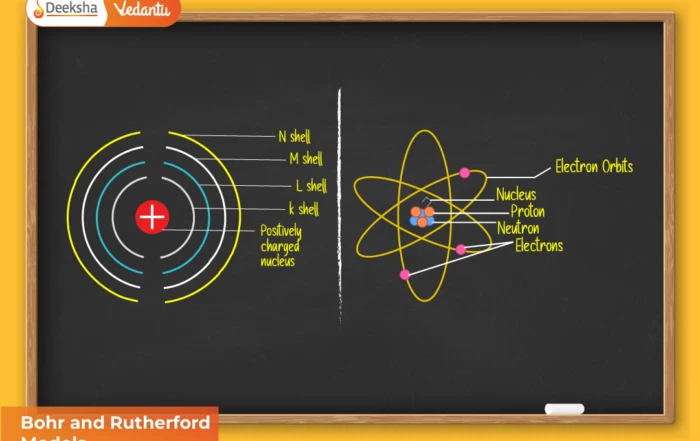Thermodynamics is the branch of chemistry that studies the relationship between heat, work, and energy. It helps us understand how energy changes occur during physical and chemical processes and whether a reaction is spontaneous. This unit plays a crucial role for NEET and JEE aspirants as it connects energy concepts with chemical reactions and equilibrium.
The main topics covered are:
- Thermodynamic Terms
- Applications
- Measurement of ΔU and ΔH: Calorimetry
- Enthalpy Change, ΔH of a Reaction
- Enthalpies for Different Types of Reactions
- Spontaneity
- Gibbs Energy Change and Equilibrium
5.1 Thermodynamic Terms
Thermodynamics involves studying systems and their surroundings:
- System: The specific part of the universe being studied (e.g., a chemical reaction in a beaker).
- Surroundings: Everything outside the system.
Types of Systems
| Type | Matter Exchange | Energy Exchange | Example |
| Open | Yes | Yes | Boiling water in an open pot |
| Closed | No | Yes | Gas in a sealed cylinder |
| Isolated | No | No | Hot water in a thermos |
State of a System
Defined by measurable properties: pressure (P), volume (V), temperature (T), and composition.
State and Path Functions
- State functions: Depend only on initial and final states (e.g., enthalpy, internal energy).
- Path functions: Depend on the path taken (e.g., heat, work).
Internal Energy (U)
The total energy contained within a system, given by the First Law of Thermodynamics:
ΔU = q + w
where:
- q = heat absorbed by the system
- w = work done on the system
For expansion work,
w = -PΔV
This equation shows that energy can neither be created nor destroyed, only transformed.
5.2 Applications
Thermodynamics has diverse real-world applications:
- Chemical Reactions: Predicting whether reactions are exothermic or endothermic.
- Engines: Determining the efficiency of heat engines and turbines.
- Biological Systems: Understanding metabolism and energy transfer in living organisms.
- Refrigeration and Air Conditioning: Studying heat transfer for temperature regulation.
- Industrial Chemistry: Calculating heat of reaction in large-scale processes.
For NEET and JEE, thermodynamics helps analyze the feasibility and energy balance of reactions.
5.3 Measurement of ΔU and ΔH: Calorimetry
Calorimetry measures heat changes during reactions using a calorimeter.
Internal Energy Change (ΔU)
Measured under constant volume conditions (no work done):
ΔU = qᵥ
Enthalpy Change (ΔH)
Measured under constant pressure conditions:
ΔH = qₚ
The relationship between ΔU and ΔH is:
ΔH = ΔU + PΔV
Example
Combustion of methane:
CH₄ + 2O₂ → CO₂ + 2H₂O
This exothermic reaction releases heat (ΔH < 0).
Calorimetry Formula:
q = m × c × ΔT
where m = mass, c = specific heat capacity, ΔT = temperature change.
5.4 Enthalpy Change, ΔH of a Reaction
Enthalpy (ΔH) represents heat absorbed or released at constant pressure.
- Exothermic: Releases heat (ΔH < 0)
- Endothermic: Absorbs heat (ΔH > 0)
Examples:
| Reaction Type | Example | ΔH | Nature |
| Combustion | CH₄ + 2O₂ → CO₂ + 2H₂O | Negative | Exothermic |
| Photosynthesis | 6CO₂ + 6H₂O → C₆H₁₂O₆ + 6O₂ | Positive | Endothermic |
| Neutralisation | HCl + NaOH → NaCl + H₂O | Negative | Exothermic |
Enthalpy values help determine reaction feasibility and design energy-efficient systems.
5.5 Enthalpies for Different Types of Reactions
Thermochemical equations represent the enthalpy changes in various reaction types:
- Enthalpy of Formation (ΔHf): Heat change when one mole of a compound forms from elements.
- Enthalpy of Combustion (ΔHc): Heat released during complete combustion of one mole of a substance.
- Enthalpy of Atomization (ΔHa): Energy required to convert one mole of molecules into atoms.
- Enthalpy of Solution (ΔHsol): Heat absorbed or released when a solute dissolves in a solvent.
- Enthalpy of Neutralization (ΔHn): Heat released when acid and base neutralize.
- Enthalpy of Bond Dissociation (ΔHd): Energy to break one mole of bonds in gaseous molecules.
These enthalpies can be interrelated using Hess’s Law:
The total enthalpy change of a reaction is independent of the pathway between initial and final states.
5.6 Spontaneity
A spontaneous process occurs naturally without external intervention.
Conditions for Spontaneity
- Negative ΔH (exothermic reaction)
- Positive ΔS (increase in entropy)
Entropy (S)
Entropy measures randomness or disorder. The Second Law of Thermodynamics states:
ΔS₍universe₎ = ΔS₍system₎ + ΔS₍surroundings₎ > 0
This means that the total entropy of the universe always increases for a spontaneous process.
Examples
| Process | Nature |
| Melting of ice | Spontaneous at > 0°C |
| Freezing of water | Non-spontaneous at > 0°C |
| Dissolution of salt in water | Spontaneous |
5.7 Gibbs Energy Change and Equilibrium
Gibbs Free Energy (G) combines enthalpy and entropy to predict spontaneity.
Formula:
ΔG = ΔH – TΔS
Interpretation
| ΔG | Process Type |
| < 0 | Spontaneous |
| > 0 | Non-spontaneous |
| = 0 | At equilibrium |
Relationship with Equilibrium
At equilibrium, ΔG = 0. This concept links thermodynamics with chemical equilibrium, explaining how temperature and energy influence reaction direction.
Practice Questions (NEET & JEE)
- Define the system and surroundings with examples.
- State the First Law of Thermodynamics.
- Explain the difference between ΔU and ΔH.
- What is the condition for spontaneity in terms of Gibbs free energy?
- Write the relationship between ΔH and ΔU.
- Explain Hess’s Law of constant heat summation.
Answers
- System: part under study; surroundings: rest of the universe. Example: reaction in a beaker.
- Energy can neither be created nor destroyed, only transformed.
- ΔU is at constant volume; ΔH includes pressure-volume work.
- ΔG < 0 indicates spontaneity.
- ΔH = ΔU + PΔV.
- Enthalpy change of a reaction is independent of its path.
FAQs
Q1. What is the difference between open, closed, and isolated systems?
Open systems exchange both matter and energy, closed systems exchange only energy, and isolated systems exchange neither.
Q2. Why is Gibbs free energy important?
Gibbs free energy helps determine whether a reaction will occur spontaneously at constant temperature and pressure.
Q3. What is the main difference between ΔU and ΔH?
ΔU measures internal energy change at constant volume, while ΔH measures enthalpy change at constant pressure, including pressure-volume work.
Q4. What does a positive or negative ΔH indicate?
Positive ΔH means the reaction absorbs heat (endothermic), while negative ΔH means it releases heat (exothermic).
Q5. How is entropy related to spontaneity?
Higher entropy (greater randomness) generally favors spontaneous processes.
Q6. What happens when ΔG = 0?
The system is in equilibrium, and no net change occurs in the reaction direction.
Conclusion
Thermodynamics provides a foundation for understanding how and why reactions occur. It connects energy, heat, and work in all chemical processes. For NEET and JEE aspirants, mastering thermodynamic laws, enthalpy, entropy, and Gibbs free energy ensures a strong grasp of physical chemistry fundamentals.











Get Social